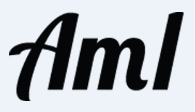Abstract
Given a domain of interest, an ontology provides a formal specification of the concepts and relationships in this domain. An alignment identifies a semantic connection between the concepts and relationships of ontologies purporting to describe the same knowledge. The majority of approaches to ontology alignment take a general view and rely on terminological and structural techniques to handle the widest possible class of ontologies. Due to the fuzzy nature of concepts and the variations in their representations, this matching process is often complicated. One area that should provide a more solid foundation for comparison is mathematical concepts. Mathematical concepts are covered by numerous ontologies, making them a potentially important basis for comparison. One part of this doctoral work is to investigate the potential of using mathematical concepts to improve ontology alignment.
This is a preview of subscription content, log in via an institution.
Buying options
Tax calculation will be finalised at checkout
Purchases are for personal use only
Learn about institutional subscriptionsPreview
Unable to display preview. Download preview PDF.
References
Hodgson, R., Keller, P.: QUDT - Quantities, Units, Dimensions and Data Types in OWL and XML, http://www.qudt.org/ (accessed on November 14, 2012)
NASA: Jet Propulsion Laboratory: Semantic Web for Earth and Environmental Terminology (SWEET), http://sweet.jpl.nasa.gov/ (accessed on November 14, 2012)
Rijgersberg, H., Wigham, M., Broekstra, J., van Assem, M., Top, J.: Ontology of units of Measure (OM), http://www.qudt.org/ (accessed on November 14, 2012)
Do, C., Pauwels, E.J.: Using mathML to represent units of measurement for improved ontology alignment. In: Carette, J., Aspinall, D., Lange, C., Sojka, P., Windsteiger, W. (eds.) CICM 2013. LNCS, vol. 7961, pp. 310–325. Springer, Heidelberg (2013)
Euzenat, J.: Semantic precision and recall for ontology alignment evaluation. In: Proc. 20th International Joint Conference on Artificial Intelligence (IJCAI), pp. 348–353 (2007)
Shvaiko, P., Euzenat, J.: Ontology matching: state of the art and future challenges. IEEE Transactions on Knowledge and Data Engineering (2012)
Choi, N., Song, I.Y., Han, H.: A survey on ontology mapping. ACM Sigmod Record 35(3), 34–41 (2006)
Euzenat, J., Meilicke, C., Stuckenschmidt, H., Shvaiko, P., Trojahn, C.: Ontology Alignment Evaluation Initiative: Six Years of Experience. In: Spaccapietra, S. (ed.) Journal on Data Semantics XV. LNCS, vol. 6720, pp. 158–192. Springer, Heidelberg (2011)
The European Bioinformatics Institute: Systems Biology Ontology, http://www.ebi.ac.uk/sbo/main/ (accessed on December 10, 2012)
Bechhofer, S., Buchan, I., De Roure, D., Missier, P., Ainsworth, J., Bhagat, J., Couch, P., Cruickshank, D., Delderfield, M., Dunlop, I., et al.: Why linked data is not enough for scientists. Future Generation Computer Systems (2011)
Lange, C.: Ontologies and Languages for Representing Mathematical Knowledge on the Semantic Web. Semantic Web Journal 4(2) (2013)
Suresh, P., Hsu, S.H., Akkisetty, P., Reklaitis, G.V., Venkatasubramanian, V.: OntoMODEL: ontological mathematical modeling knowledge management in pharmaceutical product development, 1: conceptual framework. Industrial & Engineering Chemistry Research 49(17) (2010)
Robbins, A.: Personal website, http://straymindcough.blogspot.de/2009/06/semantic-mathml.html (accessed on July 24, 2013)
Wenzel, K., Reinhardt, H.: Mathematical computations for linked data applications with openmath. In: Joint Proceedings of the 24th Workshop on OpenMath and the 7th Workshop on Mathematical User Interfaces (MathUI), p. 38 (2012)
Author information
Authors and Affiliations
Editor information
Editors and Affiliations
Rights and permissions
Copyright information
© 2013 Springer International Publishing Switzerland
About this paper
Cite this paper
Do, C., Pauwels, E.J. (2013). Harnessing Mathematics for Improved Ontology Alignment. In: Augusto, J.C., Wichert, R., Collier, R., Keyson, D., Salah, A.A., Tan, AH. (eds) Ambient Intelligence. AmI 2013. Lecture Notes in Computer Science, vol 8309. Springer, Cham. https://doi.org/10.1007/978-3-319-03647-2_20
Download citation
DOI: https://doi.org/10.1007/978-3-319-03647-2_20
Publisher Name: Springer, Cham
Print ISBN: 978-3-319-03646-5
Online ISBN: 978-3-319-03647-2
eBook Packages: Computer ScienceComputer Science (R0)


